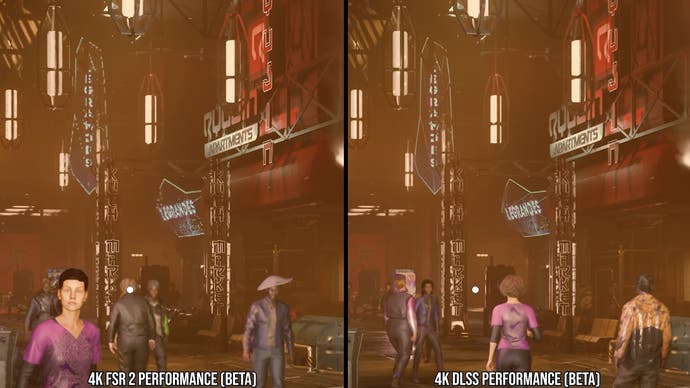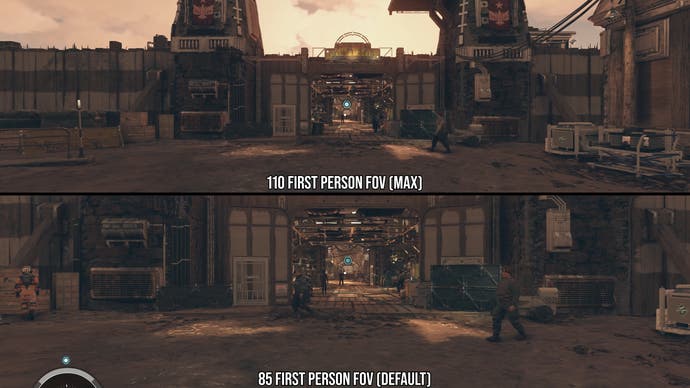Starfield's new PC patch delivers the game we should have had at launch
The beta delivers DLSS, frame-gen and massive CPU/GPU performance boosts.
I think it's fair to say that Starfield launched in a poor state on PC in September, with no official DLSS or XeSS upscaling support, no HDR controls, an underwhelming graphics menu and weirdly poor performance - especially on Nvidia and Intel graphics cards. The latest Starfield beta on Steam looks to address a number of these issues, so we tested out the new version to see how the game has changed.
One of the biggest changes for Nvidia graphics cards owners is the official inclusion of DLSS 2 and DLSS 3, for image reconstruction and frame generation respectively. Weirdly, while DLSS uses Nvidia's preferred nomenclature (quality, balanced, performance), FSR upscaling still uses a percentage-based resolution slider which feels a little unintituive for casual users.
DLSS here performs as well as it did in the community mods available soon after the game was released, but as always it's more convenient (and likely more stable) to have these options built-in. FSR 2 quality has also improved, with less ghosting in some scenarios like ejected shell casings from your weapon, though it is still more artefact-prone than DLSS overall. It would be nice to see XeSS also added, as this is another cross-platform solution like FSR that sometimes offers fewer artefacts in motion - and mods already exist to add it to the game.
The game's performance has also improved noticeably with the beta patch. Running on a Ryzen 7 7800X3D, I spotted a 20 percent performance uplift running through Akila City - which can be attributed to better CPU utilisation, with more cores used and each core being more heavily utilised compared to the non-beta version that doesn't scale well beyond six CPU cores. (However, the frame-rate readout isn't perfectly consistent, and frame-time spikes remain on both versions of the game which ought to be the target of further Bethesda action.)
This performance boost is nearly replicated on a lower-tier Ryzen 5 3600 system, where I recorded a 17 percent frame-rate improvement with the beta patch installed. This brings this CPU into 60fps territory much more frequently, which makes a big difference to how smooth the game feels to play. This kind of a performance uplift makes me think a performance mode on console could be much more viable now, given that the 3600 and the Xbox Series X CPU operate within a similar performance profile.
Combining the better baseline performance with frame generation, it's now possible to play the game at its ~165fps cap on a high-end system.


In terms of GPU performance, the game at launch ran well on AMD graphics cards but relatively poorly on Intel and Nvidia cards, eg the RX 6800 XT outperforming the RTX 3080 by 46 percent on the highest settings in one scene. This has now been redressed, with the RX 6800 XT gaining around five percent in a GPU-limited scenario, while the RTX 3080 improves its frame-rate by 30 percent in the same scene. The patch also fixes the frame-time issues caused by the ultra quality shadows on Nvidia GPUs. All told, that leaves the RX 6800 XT 18 percent ahead of the RTX 3080, a much more realistic difference.
Going down the stack to older mid-range GPUs, the performance improvements are a little less impressive. The RX 5700 sees a six percent performance uplift, while the RTX 2070 Super gains by 14 percent and the Arc A770 improves its frame-rate by just three percent. In a three-way comparison, that puts the Intel card well behind its peers, so perhaps Intel and Bethesda still have some optimisation work ahead of them.
Finally, let's take a look at the menu system. Unfortunately the menus still don't do an adequate job of explaining what different graphical settings do in terms of fidelity and performance, and the game could still benefit from the inclusion of a preview window. However, there are at least now controls for adjusting the field of view, something that addresses the quite low default FOV in the base game and allows for a more comfortable viewing experience.
There are also HDR controls, but these feel unfortunately underbaked. The game looks like it's running under Microsoft's Auto HDR, with a very flat look that doesn't look great even on a high-end OLED display. I even noticed off-grey colouring and banding in the opening scene. This is particularly disappointing when community HDR mods like Luma produce noticeably improved results.
All told, the Starfield beta patch is a huge step forward for the game on PC, with the improved CPU performance being a particularly impressive turnaround that will see many more people operating at 60fps than before, while GPU performance uplifts for Nvidia users especially are also game-changing. The user experience is also significantly improved through the inclusion of DLSS upscaling, DLSS frame generation and controls for HDR and FOV.
However, it's clear that more work needs to be done for Starfield to be in a truly satisfactory state on PC. The game's HDR implementation still pales against community efforts, while traversal stutter remains a bugbear and Intel GPU performance also seems subpar. These all feel like solveable challenges, so I hope we see Bethesda continue to polish and improve the game over time.










